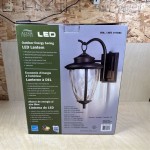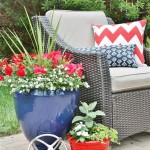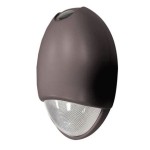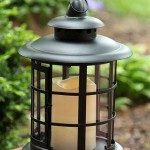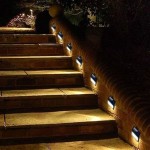Best Outdoor Ceiling Fan Ratings: A Comprehensive Guide
Outdoor ceiling fans offer a practical and aesthetically pleasing solution for enhancing comfort in patios, porches, and other open-air living spaces. Beyond simply providing a cooling breeze, they can deter insects, circulate air, and even add to the overall ambiance of your outdoor décor. Selecting the right outdoor ceiling fan, however, requires careful consideration of several factors, including durability, weather resistance, size, and features. This article will explore key features and ratings to help guide you in choosing the best outdoor ceiling fan for your specific needs.
Understanding Outdoor Ceiling Fan Ratings
Unlike indoor ceiling fans, outdoor models are specifically designed and constructed to withstand the elements. Weather resistance is paramount, and this is assessed through various ratings and certifications. Understanding these designations is crucial for ensuring the longevity and performance of your investment. The most common ratings include: UL Wet Rated and UL Damp Rated. These ratings signify the fan's ability to withstand exposure to moisture.
UL Wet Rated: This rating indicates that the fan can be directly exposed to rain, snow, and other forms of precipitation. These fans are typically constructed with sealed motors, rust-resistant hardware, and weather-resistant blades. They are suitable for uncovered patios, pergolas, and other areas where direct exposure is unavoidable. The electrical components are fully protected from water intrusion, including the motor, wiring, and light fixtures (if applicable).
UL Damp Rated: A damp rating signifies that the fan can withstand moisture, humidity, and condensation, but should not be directly exposed to rainfall. These fans are suitable for covered patios, porches, or gazebos where they are shielded from direct precipitation. While they offer a degree of protection against moisture, prolonged exposure to rain or snow can lead to damage and premature failure. They are built with materials that can tolerate humid conditions and occasional splashes, but aren't designed for full submersion or continuous rain exposure.
Choosing between wet-rated and damp-rated fans depends on the specifics of your outdoor space. If your fan will be completely sheltered from the elements, a damp-rated model may suffice. However, for areas that are exposed to any amount of direct rainfall or snow, a wet-rated fan is the only suitable option. Ignoring these ratings can lead to electrical hazards, corrosion, and a significantly shortened lifespan for your fan.
Key Features to Consider
Beyond the essential UL ratings, several other features contribute to the overall performance and suitability of an outdoor ceiling fan. These factors include blade material, motor type, size, and control options. Examining these aspects will help narrow down your choices and ensure you select a fan that meets your specific requirements.
Blade Material: Outdoor ceiling fan blades are available in various materials, each with its own advantages and disadvantages. Common materials include ABS plastic, acrylic, and metal (often treated for rust resistance). ABS plastic blades are lightweight, durable, and resistant to warping or cracking in humid conditions. Acrylic blades offer similar benefits and can also be molded into decorative shapes. Metal blades, typically aluminum or stainless steel, are strong and long-lasting but can be more susceptible to corrosion if not properly treated. The choice of blade material should be guided by the level of exposure to the elements and your aesthetic preferences.
Motor Type: The motor is the heart of any ceiling fan, and its quality directly impacts performance, efficiency, and lifespan. Outdoor ceiling fans often utilize AC (Alternating Current) or DC (Direct Current) motors. DC motors are generally more energy-efficient, quieter, and offer a wider range of speed settings. They also tend to be more expensive than AC motors. AC motors are a more traditional option, known for their reliability and affordability. Look for motors with sealed bearings and robust construction to ensure long-term performance in outdoor environments. The motor should also be appropriately sized for the blade span; undersized motors will struggle to move larger blades effectively.
Size and Blade Span: The appropriate size of your outdoor ceiling fan depends on the square footage of the area you intend to cool. A general rule of thumb is to use smaller fans (42-44 inches) for spaces up to 100 square feet, medium fans (52 inches) for spaces between 100 and 400 square feet, and larger fans (60 inches or more) for spaces exceeding 400 square feet. Properly sized fans will circulate air more effectively, providing optimal cooling and comfort. Consider ceiling height as well; lower ceilings may require hugger-style fans that mount closer to the ceiling to avoid obstructing movement. The blade span is the diameter of the circle swept by the blades and is a key indicator of the fan's airflow capacity.
Control Options: Outdoor ceiling fans can be controlled using a variety of methods, including pull chains, wall controls, and remote controls. Pull chains are the simplest and most affordable option, but they can be inconvenient to reach, especially on high ceilings. Wall controls offer a more accessible and user-friendly alternative, allowing you to adjust the fan speed and light settings from a convenient location. Remote controls provide the greatest flexibility, enabling you to operate the fan from anywhere within range. Some advanced models even offer smart home integration, allowing you to control the fan using voice commands or a smartphone app. When selecting a control option, consider the ease of use and your personal preferences.
Factors Influencing Ratings and Performance
Several factors contribute to the overall rating and performance of an outdoor ceiling fan. These include design considerations, energy efficiency, airflow and aesthetics. Evaluating these elements will allow for a sensible decision, maximizing the advantages of your investment.
Design and Aesthetics: Outdoor ceiling fans are available in a wide range of styles to complement various architectural designs and outdoor décor. From traditional to contemporary, there's an option to suit every taste. Consider the overall aesthetic of your outdoor space and choose a fan that blends seamlessly with the existing design elements. Pay attention to the finish of the fan housing and blades, as well as the shape and style of any included light fixtures. A well-chosen fan can enhance the beauty and appeal of your outdoor living area.
Energy Efficiency: Energy efficiency is an important consideration for any appliance, and outdoor ceiling fans are no exception. Look for fans with the Energy Star label, which indicates that they meet strict energy efficiency standards. Energy Star-certified fans typically use less electricity than standard models, saving you money on your energy bill. Check the fan's airflow efficiency rating (CFM per watt) to compare the performance of different models. Higher CFM per watt ratings indicate greater energy efficiency. Using a DC motor can also significantly improve energy efficiency compared to an AC motor.
Airflow and Circulation: The primary function of an outdoor ceiling fan is to circulate air and provide a cooling breeze. Look for fans with high CFM (cubic feet per minute) ratings, which indicate the volume of air they can move. Fan blade pitch also plays a crucial role in airflow; blades with a steeper pitch will move more air than those with a shallower pitch. Consider the layout of your outdoor space and choose a fan that can effectively circulate air throughout the entire area. A fan with reversible blades can be used in the winter to circulate warm air trapped near the ceiling, improving energy efficiency and comfort.
Ultimately, the best outdoor ceiling fan is the one that meets your specific needs and preferences. By considering the factors discussed in this article – ratings, essential features and factors influencing performance – one can confidently select a fan that provides years of reliable performance and enhanced enjoyment of their outdoor living space.

Blown Away Best Ceiling Fans For Large Rooms Delmarfans Com

Best Outdoor Fans 2024 Forbes Vetted

How To For A Ceiling Fan Reviews By Wirecutter

Outdoor Ceiling Fan Ideas For Pergolas And Porches

Best Outdoor Fans 2024 Forbes Vetted

The Best Ceiling Fans Reviews Ratings Comparisons

16 Best Ceiling Fans For Extra Airflow In 2024

Popular Types Of Ceiling Fans For Outdoor Use Iawmd

Outdoor Ceiling Fans Guide Delmarfans Com

Best Outdoor Fans 2024 Forbes Vetted
Related Posts
